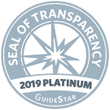SUMMARY OF THE STUDY
The Whickham cohort is a random population of individuals living in Whickham, England, who have been followed over many years to study development of disease. In particular, thyroid hormone levels have been followed in this group over the years. Of 1704 survivors of the Whickham cohort, a total of 204 remained for the study after attending a baseline visit between 2008 and 2012 and a follow-up visit between 2016 and 2019. Thyroid function levels were assessed as the change in TSH, FT4, and FT3 levels between baseline and follow-up values.
The average age of the individuals was 77.0 and 55.9% were female. The follow-up average was 7.8 years. The results showed that the serum TSH concentration increased from 1.94 mIU/L to 2.18 mIU/L over this time period, while FT4 remained similar and FT3 concentration decreased slightly. At the beginning of the study, 3.5 % of patients were diagnosed with subclinical hypothyroidism. Throughout 7.8 years of follow-up, patients with subclinical hypothyroidism increased to 9.0% when using standard TSH reference ranges (0.3–4.5 mU/L), but it decreased to 2% when using the visit-specific reference ranges (0.54–6.28 mU/L). Thyroid antibodies also decreased significantly over the period of time.
WHAT ARE THE IMPLICATIONS OF THIS STUDY?
This study shows that TSH levels increase and thyroid antibodies decrease with aging. Therefore, it is important to develop and use more age-appropriate TSH reference ranges to avoid overdiagnosis and overtreatment of hypothyroidism in older adults.
— Joanna Miragaya, MD



